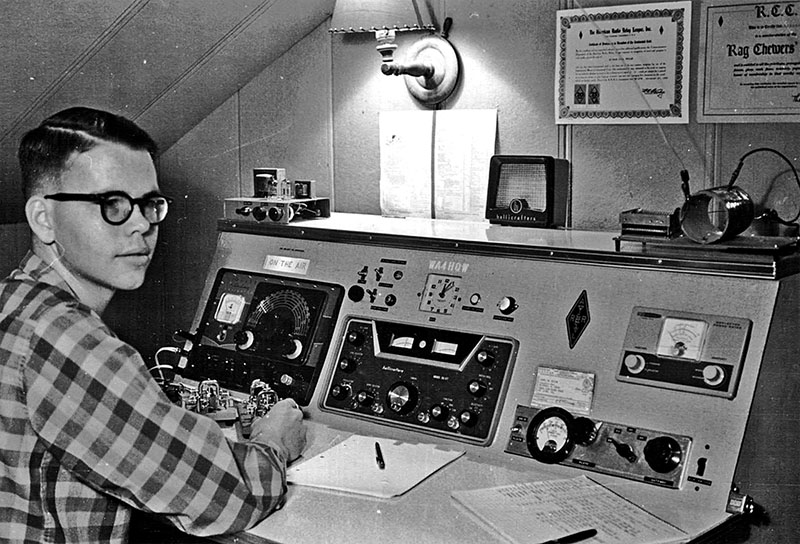By late 1962, the desk was too cramped, so I built a comfortable operating "console" in the opposite end of my bedroom.
I constructed the console from plywood, glued Formica laminate to the plywood desktop, and applied metal edge trim to it. The sloping front panel was made of 1/8" Masonite covered with self-adhesive "Contact Paper" shelf liner. Form-fitting holes in the panel allowed the equipment to poke through, while resting on a sloping shelf behind.

I upgraded my radio equipment with a new receiver and an amplifier for the Navigator transmitter.
On the left we see the Navigator, with the Vibroplex bug in front. Above the transmitter is an On The Air sign that lit up when I pressed a foot switch to transmit. Next is a spanking-new Hallicrafters SX-117 receiver – a state-of-the-art ham-band receiver that was light-years ahead of the Scott SRR-3. Next to the SX-117 is a homebrew 175W amplifier I bought from a fellow ham. To the right of the amplifier is a household wall switch (the "big switch") that controlled power to all equipment in the console.
I believe the device above the Navigator transmitter is a homebrew keyer using two tubes (12AU7?). Bolstering this belief is the Vibroplex paddle seen to the left of the bug.
I still have the logbook shown on the console desktop; in fact, I have all my logbooks starting with Novice.
My plastic-laminated ham license is tucked behind the oversize meter on the amplifier. Above the amp is a Heathkit SWR meter, and above that is a homebrew L-network antenna tuner – the 130' end-fed longwire ran right into the room through a nearby window. I could draw RF arcs with a pencil from the coil!
Updated April 18, 2025